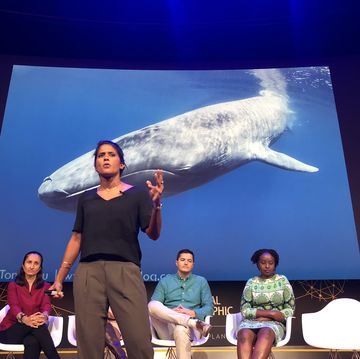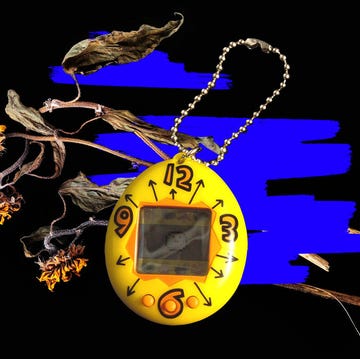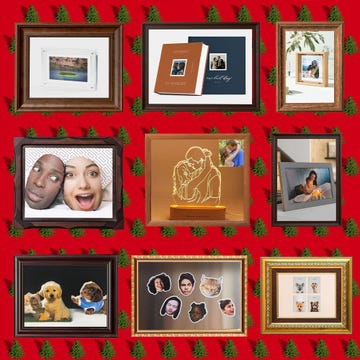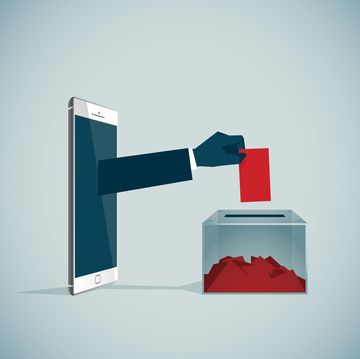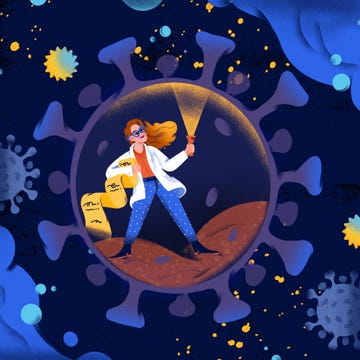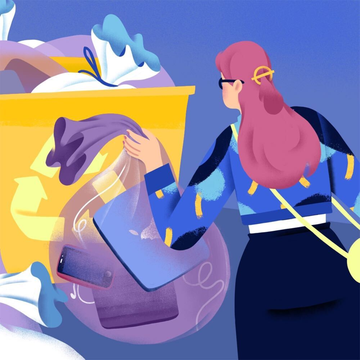Did you know you could sell your Tweets? Auction them off? Make a little side profit? Well, it turns out you can. The world learned this last week when Twitter Founder Jack Dorsey auctioned off his first-ever Tweet from 2006. It reads: “just setting up my twttr”, and it sold for $2.5 million.
That’s right. Two. Point. Five. Million. Dollars. For a Tweet.
But how did he actually sell it?
It’s not a copyrighted piece of content that you can buy and download and enjoy — like an e-book or a song. It’s not a movie that you can rent on YouTube or Amazon Prime. And the Tweet isn’t private. There’s no paywall, so anyone can see it. It’s actually smeared all over the internet right now, it’s on Twitter itself (which is public), and it is embedded into online articles everywhere.
Like this one.
See?
So how do you sell something that’s free? A piece of digital content that everyone can see, use, and share?
Introducing Non-Fungible Tokens, or NFTs.
Non-Fungible what?
Non-Fungible Tokens. Perhaps you’ve seen the term doing rounds on social media in tantalizing headlines like: “Grimes Sold $6 Million Worth of Art as NFTs” and “NFT Art: This JPG Just Sold For it $70 million; wait what?” Anyone paying attention or trying to pay attention is left both mesmerized and scratching their head.
We have musician Grimes selling her art — pics of babies holding spears, to be exact — for millions as NFTs. Then there's an artist known as Beeple who just sold a publicly viewable, shareable, and downloadable piece of digital art — a photo collage of 5000 images called “The First 5000 Days” — as an NFT for $70 million. The auction was facilitated by Christie's in London and the NFT marketplace MakersPlace.
We also have a clip of LeBron James doing a slam dunk at last year’s NBA Championship, which sold as an NFT for six figures. This was made possible through NBA Top Shots, a platform that takes clips of NBA highlights then turns them into NFTs and lists them for auction.
Then we have Dorsey’s Tweet.
So what on earth is an NFT?
Here are some high-level details.
An NFT represents a specific, one-of-a-kind item of value
It turns things like Dorsey’s Tweet, Beeple’s Art, the spear babies, and the slam dunks, which are available to the public to both view and download, into original items. These are known as digital collectibles.
(An NFT can also represent a physical item of value, but that's for a separate article.)
An NFT is digital — it’s not a token you hold in your hand
It’s a bit similar to Bitcoin. Bitcoin is a digital currency — or digital coin. An NFT is a digital token (basically a coin, just termed differently) worth whatever the item of value is worth.
In the case of Dorsey’s Tweet, the token is worth $2.5 mil.
The NFT digitally proves ownership, originality, and authenticity
This is achieved through blockchain technology. The actual process of creating an NFT is called "minting."
Blockchain is what powers Bitcoin and all cryptocurrencies. Without blockchain, there’d be no Bitcoin.
Blockchain is basically a digital ledger that stores a history of transactions on a network of computers throughout the world.
Because it’s not stored on a single server or computer, it’s considered decentralized. Each computer must validate every single transaction. These transactions are time-stamped and stored in what’s called a “block,” which is really just a digital file that fills up with individual transactions.
Once a block reaches maximum capacity, a new block is created on the chain. Because all of these transactions are time-stamped, and because each computer must verify each transaction, there is little way to tamper with the data. It’s considered immutable.
There are multiple blockchains in existence. Most famously the cryptocurrency Bitcoin is made possible because of blockchain technology.
An NFT is 100% unique
It has a unique digital thumbprint that acts as a serial number.
This is where the term Non-Fungible comes in, meaning an NFT isn’t interchangeable with any other NFT. There are fungible tokens used on blockchains that you can exchange 1:1, but you can’t do this with an NFT because no two are alike. They are not replaceable.
An NFT is bought and sold with cryptocurrency
This cryptocurrency can be sold for U.S. dollars, potentially making an NFT-owner a profit. The owner of the NFT would sell it on an NFT marketplace, like OpenSea.
You buy cryptocurrencies with U.S. dollars (or another foreign currency) on a cryptocurrency exchange. Some popular and easy-to-use exchanges include Coinbase and eToro. Here, you plug in your credit card details and purchase the cryptocurrency of your choice.
The cryptocurrency you need to purchase an NFT will depend on the specific NTF marketplace you want to use. If you want to sell the NFT down the line, you can do so on a marketplace in exchange for cryptocurrency. To cash out and make a profit, you go back to an exchange like Coinbase or eToro and sell the cryptocurrency for U.S. dollars.
The worth of the NFT depends on its sale price
This can fluctuate, much the price of a work of art can fluctuate, depending on market demand.
An NFT can appreciate or depreciate in value
Just like Bitcoin. Just like a baseball card. It appreciates and depreciates according to consumer demand. When they’re sold on an NFT marketplace, people make bids to purchase. Because each NFT is unique, it creates scarcity. If a bunch of people are clamoring to get their hands on one, thinking the value will increase, the price will rise.
The real-world value-add?
Digital content creators can create verifiable originals of their work and get paid as a result.
But a work of digital art and a Tweet are two totally different things
This is true. But the crypto space is a lot like the Wild West — or a playground. Though blockchain and cryptocurrency do have real-world use cases that can solve real-world problems, innovators in the space like to fool around, be silly, be weird, create new bizarre projects, and then see where they go.
With NFTs, the important use cases include the authentication and commodification of digital art, and this can also apply to other digital works, including original music. NFTs can also serve as tickets to live events. Typically, when you buy these tickets online, you purchase them from one of several available third-party sales platforms, which could be selling fraudulent tickets. If the tickets are bought as NFTs, you know the ticket you purchased is valid.
Dorsey was sort of fooling around with his Tweet, but it was both playful and purposeful. He showed his support for NFTs, he piqued mainstream interest in the NFT market at the time, which could help bring millions in revenue to digital content creators and cryptocurrencies in general, and he raised a ton of money that he says he’ll donate to charity.
So NFTs are a new thing?
For the mainstream — yes. For blockchain enthusiasts — no.
NFTs have technically been around since 2012, but the digital-collectibles use case didn’t start until 2017 when a platform called CryptoPunks was born. Not long after that, a game called CryptoKitties also took off.
So what’s the deal with CryptoPunks?
CryptoPunks is a platform that sells quirky, old-school-looking, one-of-a-kind, blockchain-generated images as digital collectibles. By old school, we mean pixelated in a 1980s Super Mario Bros style. The images are created through algorithms on the blockchain, not in a graphic design program, unlike Beeple's piece. Though the CryptoPunk images are blockchain-generated, they are visibly viewable as JPEGs.
These wonky images have generated $180 million in sales since 2017 on the CryptoPunks platform. It was its own little niche that took off. And then CryptoKitties followed suit.
But how can a JPEG be one-of-a-kind if it can be downloaded and shared?
Remember that thing we said about “minting”? An NFT is created through a bunch of code programmed into the blockchain. This code gives the NFT a unique digital thumbprint. Think of it as a digital serial code. Because of the nature of blockchain technology, the code — technically called a Smart Contract — cannot be altered, forged, duplicated anymore than an original Van Gogh can be altered, forged, or duplicated.
An NFT is ultimately even less susceptible to forging than the physical painting.
Why are cats involved?
Remember what we said about playfulness and experimentation? Well, CryptoKitties is a perfect case study. It just happened to turn into a success. These kittens are just like the CryptoPunks art — each of them blockchain-generated and also viewable as JPEGs. Each kitten is totally unique in appearance.
The creators of these cats have more influence than you might think.
That Lebron James slam dunk that’s making headlines? That was created by the same company that created CryptoKitties — Dapper Labs. When CryptoKitties and CryptoPunks took off in 2017, even blockchain enthusiasts thought it all was weird and a bit kooky, but most people knew this could really turn into something more useful and relevant to society. Or at least more mainstream, which is exactly what NBA TopShots is.
But why would anyone pay $2.5 mil for a Tweet or $100,000 for a digital kitty?
Why does someone pay $53,000 for Madonna’s bra? Why does anyone pay $50K for a Bitcoin? Why is the Mona Lisa worth nearly one billion dollars?
Ultimately, it boils down to what we collectively agree has value. Legacy institutions — the art world, the Christie’s folks, the Sotheby’s folks — those gatekeepers and appraisers have determined what kind of art we value and what artists we value.
NFTs mess with this entire paradigm. They disrupt it. Kinda how Bitcoin could disrupt legacy finance — also known as Wall Street.
So NFTs just boil down to FOMO?
The finance folks will most assuredly label NFTs worthless speculation, as they often do with Bitcoin. Journalists, or your BFF or mother or lover, might call it all hype.
Mania. Frenzy.
You can’t necessarily blame these guys. When a single Bitcoin goes for $3,600 in March of 2020 and cranks up to nearly $30K by the end of the year, you know some major FOMO is jacking up the price.
Or Big Tech Bros.
At the top of the year, these bros — Musk, Dorsey, some other dudes — swapped out their Twitter bios for the simple #Bitcoin, and the price of one coin blew up to $50K.
Bitcoin didn’t change. It didn’t suddenly have a new feature or use case. But when big-time influencers began pumping billions of dollars into it and showing off their support, consumers started gobbling up the coins.
This is exactly how NFTs work — their value hinges on speculation. But, as mentioned before, NFTs have real-world value. They can be hugely beneficial to artists, musicians, and other content creators by turning their work into an original digital item that can be sold.
This is also true for social media users. Dorsey’s Tweet is a silly example, but let’s say someone crafts an especially poignant Facebook post that goes viral. They could turn that into an NFT and then potentially get revenue for it.
Why is this happening now?
Early blockchain enthusiasts knew this moment was coming. Bitcoin, Ether, and other cryptocurrencies are on a big-time bull run and have been since the end of 2020, which has fueled mainstream interest in both the crypto market and blockchain in general.
But NBA Top Shots likely played a big role in the explosion of NFTs. It just launched a couple of months ago. And then Grimes and Beeple and Dorsey made headlines when they created their own NFTs and sold them for millions of dollars.
Can I buy an NFT?
You sure can.
Hit up OpenSea, SuperRare, and Rareable. You can browse around and see if anything suits your fancy. Just know that you will have to buy it with a cryptocurrency like Bitcoin or Ether.
It’s not hard to take the plunge and buy up a bit of this stuff.
Where is all this headed?
NFTs stand to disrupt many different markets.
One of the most exciting use cases of NFTs is fractionalization. Blockchain technology can create NFTs that can be split up into multiple pieces so that multiple people can own a fraction of the NFT. Take the Mona Lisa. Most of us can’t afford to buy a painting worth $900 million, but if it's turned into a fractionalized NFT, we could conceivably afford a piece of it.
So where this is headed is someday you might own a piece of the Mona Lisa. Or a piece of Madonna’s bra, if you’re into that. And then you can capitalize on the appreciating value of these items. This not only democratizes art investing, but it means you might get to say you own a part of one of the most iconic paintings on earth.
Tracy Chabala is the Lifestyle Editor at Shondaland
Get Shondaland directly in your inbox: SUBSCRIBE TODAY






